Art of the Genre: The DM Screen
When it comes to RPG art, there’re certainly a good number of pieces that will stick out in player’s minds for any number of reasons. Some of us remember images we based characters off of, some fell in love with representations of beautiful women, and others used specific books so much that the cover images turned into old friends.
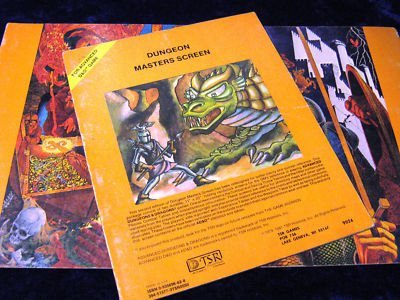
Still, I believe that there is one particular set of RPG images that wedge themselves heavily in the mind of ALL gamers, and those are found on the reverse side of DM Screens. I don’t care what generation or edition of the game you’ve played, as a player you’ve spent countless hours staring at the art on those screens.
Truly, even if you’re not an ‘art guy,’ you’ve managed to study details in the images on those screens you’d never have noticed otherwise. The characters depicted are memories burned into your subconscious like a kind of Pavlovian conditioning, even a glance at those images giving rise to the urge to game no matter how many years you’ve been away from the table.
I started playing D&D Basic, which of course had no screens, but when I met my oldest gaming friend, Mark, I was introduced to a DM’s screen for the first time and the rest is history.
Those early years using the 1st Edition AD&D mechanics are the times I think screens mattered most. In that system you needed the screens for easy access to the elaborate ‘to hit’ charts and saving throws. It was the perfect place to house them, and I’m not sure if this was the initial design concept, but whatever the case it worked very well. Assuming this was their primary purpose then the secondary consequence of the screen was, and still is, the true genius behind it all, that being the ability to hide the dice from the prying eyes of the players.
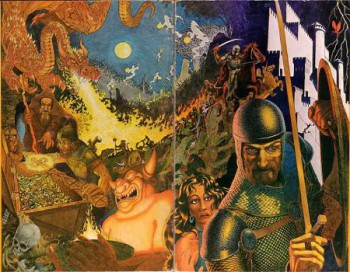
Most people consider the concept of the screen to be ‘Behind the Wall’, the sacred realm of the Dungeon Master where all dice rolls are just mysterious sounds and every dark monster waits in a tangle of black and white numbers and statistics.
To the player, the screen is both a blessing and a curse. Trust me, without that veil of secrecy the world suddenly becomes very real and your characters vulnerabilities are raw and exposed. Mark, my friendly first DM, once created a modern air combat game called Area 89 and with it he refused to use a DM screen. The result, all the players were terrified to actually watch him roll the dice because up until that point we all knew it was possible [if unlikely] that he could pull a punch if necessary to derail our efforts for a TPK [Total Party Kill]. That’s the power of the screen, it protects and serves, and yet I seem to be getting off topic so let me adjust.
Other than a reference and protection for both Player and DM, the screen also takes the form of a canvas for pause. I’m going to repeat that because I so like the way it sounds, A Canvas for Pause. Yeah, it sets a stage for the interlude, the moment in time when a player can stare at art in their dreamy caffeine, sugar, and pizza induced lucid-coma while the DM does some catch-up.
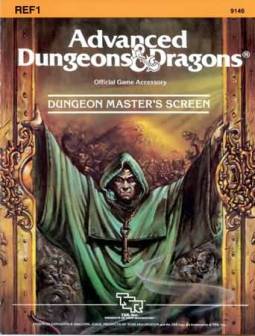
Ok, so I’m going to digress here, but indulge me as this is my blog after all. We’re climbing in the way-back machine to 1985, where for me this journey began in brilliant gold. Mark [I talk about him a lot, I know] would invite me over to his house across the Tippecanoe River for AD&D gaming and he had the 1st Edition ‘Gold’ DM Screen, presumably a gift from his older brother Greg who began playing with the White Box Holmes Set. Anyway, I spent the better part of my early teens staring at that screen, one with a cover done by Erol Otus, but more importantly an incredible fantasy collage painting by Dave Trampier. Now as far as I’m concerned Dave Trampier is the definitive RPG art GOD, and his work on that DM screen is one of the most important contributions in gaming history.
The particular scene Trampier depicts is located on the more useful of the two screens included in that package [the one with the ‘to-hit’ tables and saving throws, NOT the psionics], and it was my constant companion as the entire genre was defined around me.
As I considered this topic for Black Gate I called Mark up in Indiana to discuss those now tattered and falling apart screens. We talked about the Trampier collage and he pulled down his 1st Edition Player’s Handbook with the famed ‘temple raid’ Trampier cover [also included on the ‘Gold’ screens] because it held a repeated image from the collage, the famed brazier-holding idol. It was only then that I finally ‘got it’ after all those years of memorizing every detail of the image.
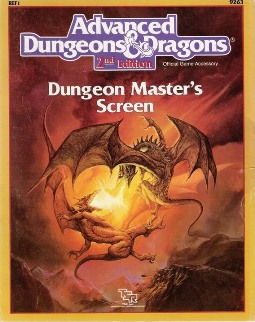
My revelation was not that the idol was repeated in the collage, I’d certainly known that for years, but that the scene on the screen told an ongoing story as a kind of second chapter from the Player’s Handbook cover. I’d always wondered about the lizardman siege represented by the scene, because in all my gaming days I’d never heard of a lizardman army having any desire to crawl out of their swamp to siege a human fortress. However, when discussing both images with Mark, we spoke about the Player’s Handbook idol having its ruby eyes pried out by the human adventuring party, and that the identical idol on the DM screen didn’t have the ruby eyes. To this point I thought it a simple omission, but now I understand that the ‘eyeless’ idol was in fact the same one, now defiled by human greed.
The interlocking storyline is there, the Player’s Handbook raid, and thievery perpetrated on a lizardman god, having come back to haunt the humans as the lizardmen raise an army and storm a human stronghold in search of their stolen gems. Incredible that it took me twenty-five years to make the connection, but I guess my mind was so divided by Tramp’s other images on the screen that I couldn’t put two and two together.
Although captivating in their own right, the lizardmen and idol aren’t the only images on the screen, the ‘magic sword’ scene where a fighter pulls forth a golden broadsword from a chest while a wizard points at is was enough to get my love of fighters worked up, and the ‘ghost in the graveyard’ globe lanterns in the top right also made my mind drift to the horror of the walking dead.
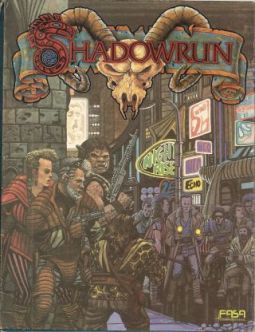
Trampier also includes a fire-breathing red dragon, always a money shot, and finally his ‘princess rescue’ scene where the longsword-wielding knight with bronze ring escorts the full-lipped maiden from danger [perhaps even escaping the lizardman siege] is an inspiration to us all to be valiant and brave. It’s all there, everything a player could ever want to look at while dreaming of treasure, glory, reward, monsters, dark gods, and women.
Of all the pieces in the D&D multiverse, this one is king, and yet I don’t believe it gets any of the honor it so readily deserves. Ok, jumping off my soapbox and back on topic!
By 1988 Mark and I were playing Paladium’s Robotech, which oddly enough didn’t have a DM screen [by this time entitled Game Master’s Screen for games other than D&D] so Mark purchased the AD&D 2nd Edition DM Screen because A: the Gold Screen was threadbare, and B: we didn’t need the tables and charts since you only had to roll a 6 or better on a D20 to hit in Robotech.
This transition was perfect for the 2nd Edition DM Screen because 2E went to a THACO [to hit armor class zero] system which didn’t require all the extensive ‘to-hit’ tables that made the 1E’s screen a requirement. The lack of a true ‘need’ for tables turned the screen into more a ‘wall’ for dice and paper protection, and eventually paper-clips were used to attach stat and note sheets to the inside of the screen and free up table space.
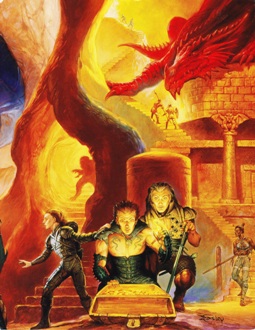
There was also another drawback to the 2E screen, being that only a single picture, two dragons locked in battle, appeared on it and didn’t give players enough to dream about. For me, that screen was replaced in the early 90s when we switched to FASA’s Shadowrun RPG as our primary game, and I got to enjoy Janet Aulisio’s cyberpunk visions on their 2E cover which was totally gorgeous.
FASA understood something, that the screen should be used from both sides of the table, and the artwork once again gave me countless hours of enjoyments as I rolled handfuls of D6s in a Bladerunner-like dark future while trying to pick out details of murder, drug deals, prostitution, and city life on the mural before me.
Eventually, 3rd Edition D&D rolled out and Jeff Easley was tasked with making a dungeon/cavern image on a single quad-fold screen depicting all the character iconics of the new system in action. This screen once again gave players something to look at, as did my favorite 3E screen from the Forgotten Realms setting that features an undead beholder wreaking havok, although I’ve no visual evidence of it to present to you in this article because it was Mark’s screen…
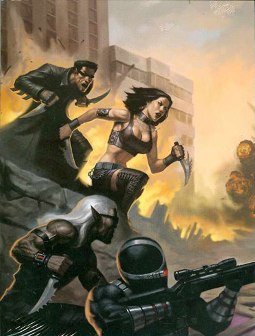
These two screens dominated most of my new millennia, as well as the full wrap D20 Modern warfare screen, but as most old-time gamers do twenty years into their gaming career, I spent the vast majority of my gaming days ‘behind the wall’ instead of on the art side, so these images aren’t as memorable as those of my early years.
By the later side of the last decade Wizards of the Coast had released 4th Edition D&D, and Paizo countered with their 3.5 upgrade in the Pathfinder RPG. Both systems have their draw, but as for screens, I’m going to give my full nod to 4E because both their standard as well as deluxe screen features impressive [and storytelling] scenes. Sure, it doesn’t draw us into several different storylines at once like the Trampier Gold, but it is impressive and eye catching. Paizo, although providing the hardiest and heavy screen to date [save perhaps the Exalted 2E Storyteller’s Screen], misses the mark by reproducing their Wayne Reynolds character iconics for the 3rd time [Pathfinder Adventure Paths 1-12, Pathfinder Core Book classes, and then this screen] instead of issuing new art for their otherwise outstanding system.
For gamers, we need something to look at that draws our imagination that can be used as a mental dalliance during a reprieve in an eight hour gaming session. These scenes provide that, and the more complex, the more elements that provide additional story-arcs, the better the screen for all those playing.

My life has been defined by screens, both in front and behind, and I’ve come to see them as old friends at the gaming table. Each tells a thousand stories, both with their own art, and the phantom memories of the sessions they’ve overseen. ‘The Wall’ is a must for proper gaming, and I continue to display them with pride as long as I’m able, and you know, as I’m off to Lake Geneva in three weeks, I think I’ll dig out some Trampier Gold and see what adventure awaits in the old-school AD&D that I’ve not had the opportunity to play in the decade since the 3E release. Wish me luck!
It took you 25 years to see the story in the screen? I spotted it *right away!
Castles & Crusades has a quad-fold screen with a single image across it, but I haven’t bought it yet and it doesn’t look like they have the entire artwork available online anymore. Since they have their own book binder now, there’s been talk of a hard-back version of the screen being released.
I fondly remember letting myself into the college library late one night in order to make screens for WFRP. I dropped about $4 into the copier, grabbing art and tables from the book, resizing, cutting & pasting, and recopying.
WotC produced a castle-like DM screen with built in dice towers, but I’d rather look at artwork.
* — that is, as you mentioned. I always thought that artwork so-so, but wow, does that up it in my eyes.
Incredible that it took me twenty-five years to make the connection, but I guess my mind was so divided by Tramp’s other images on the screen that I couldn’t put two and two together.
If it makes you feel better, I had no idea either until I read your article.
I still have my screen, by the way, and it’s in pretty good shape.
Jeff: I’ve seen that castle screen, but without art, it loses something for me. Awesome about you making your own screen, and you’re certainly not the first to do so.
Brian: Pretty good shape!? You obviously need to do some more gaming! Awesome that you still have it, and I’m glad I told you something you didn’t know about it.
Scott,
OK, so it’s Sunday night. Better late than never? What can I say, I had a busy week. 🙂
Gee, where to start? Well, how about with you finding the hidden story within Trampier’s DM screen. What an amazing discovery. I never owned a DM screen for D&D, but I remember seeing the Gold screen with Trampiers artwork. I never put the pieces of the puzzle together as you did, but after looking at it and reading your observations, I think you’re absolutely right. I remember someone pointing out one of the lizardmen on Trampier’s screen looks a bit like the older TSR logo with the lizardman holding a halberd from the mid to late 70s. It’s the the lizardman just to the right of the fighter examining the sword and just above the eyeless stone idle from the PHB. Here’s a link for comparison:
http://en.wikipedia.org/wiki/TSR_logos
However, in my opinion, that observation pales in comparison to your discovery. Well done!
I’m not sure why, but I never purchased a DM screen. At first, when it was my turn to DM, I would prop open the DM Guide and PHB to whatever I needed and used them as a screen, but it wasn’t satisfactory. I remember telling my Dad this and he suggested I make a screen. With his help I made a bi-fold screen that I taped hand written charts to the inside of. This worked very well, but it was very boring, just plain gray cardboard stock. (No, Canvas for Pause.) I never consider adding artwork to it, which makes my older self wonder why my younger self lacked the creativity or imagination to do so. I guess I was too focused on making great adventures, right?
By the time 2E was released, I wasn’t playing D&D, so I missed the other iterations of DM screens entirely. I do like the Canvas for Pause for the 4E very much. Is that a tri-fold screen?
Which is a nice segue to your phrase, “Canvas for Pause”. What a fantastic idea. If you haven’t all ready considered it yet, I think you have the makings for a wonderful doctoral thesis there.
Cheers,
Zachary
Very interesting article and a nice follow up to BG15. Must say you threw me a bit when you said Basic D&D did not have screens, I distinctly remember staring at the brown AC2 screen with its funny 3 humanoids (still dunno what the one on the right was) and later AC7 when we hit master set.
Then I remembered there were 2? previous basic versions before the one I was introduced to role playinga and D&D with.
Screen wise art was always great to starte at, but in one home grown game (based on Top Secret SI rules) my group came up with, we have a 4 page screen with GM data one side and useful player data other side. Made it necessary for me to wear my glasses when we played so I could see what to roll when and where:)
Tony
Zachary: I was wondering if you’d make it in this week 🙂 You may well be right concerning that lizardman image, and it certainly means that Tramp is being very ‘into’ the process when he made this particular picture.
I enjoyed the story of you making your own screen. I’ve seen several people do this, and I would love to find a place that would allow you to ‘build your own’ screen and then print it up for you. Now that would be outstanding!
I’m pretty sure the 4E screen is 4 panels and three folds, although I’ve never laid hands on it as it was just released in Feb.
Tiberius: Wow, I’m totally not aware of the screens you are talking about. No screen came with any basic boxes I ever had, ala Otus cover or Elmore Red Box. Can you provide a link to these ‘AC’ screens you are talking about? I’d love to take a look.
Hi Scott.
I found a nice little archive at:
http://www.tsrinfo.net/archive/ddindex.htm
Choose Dungeons & Dragons and scroll down to Accessories. Enjoy:)
Tiberius: Freakin’ outstanding link! Thanks, and now that I see AC2, I do remember it, although I never owned one.
[…] the “Art of the Genre” at Black Gate magazine. His first article focuses on “The GM Screen” and his more recent article focuses on the art of “Maps and World-Building.“. […]